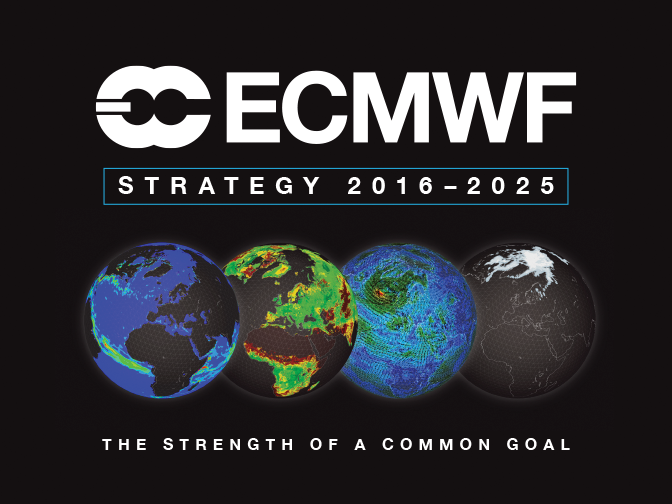

ECMWF’s Council has approved a “demanding” new Strategy, which sets the Centre’s direction of travel until 2025.
The 36-page document covers all aspects of ECMWF’s operations, from advancing weather science and improving global numerical weather prediction to developing high-performance computing.
It was approved unanimously by the representatives of ECMWF’s Member States meeting on 30 June and 1 July for their first Council meeting in 2016.
Council President Gerhard Adrian said the decision was “good news for the Centre’s Member and Co-operating States”.
“The new Strategy sets demanding targets for medium- and long-range numerical weather prediction, including the ability to make skilful ensemble predictions of high-impact weather up to two weeks ahead,” he explained.
“It will underpin the Centre’s research efforts and guide its programme to adapt the forecasting system to future supercomputer architectures.”
ECMWF Director-General Florence Rabier said the Strategy gave the Centre a “clear direction and a renewed sense of purpose”.
She added that the Strategy confirms the primacy of an ensemble approach to forecasting. Ensemble forecasts provide a range of likely scenarios and give an indication of the confidence forecasters can have in their predictions.
“This enables us to adequately capture the likelihood of extreme weather, which is essential because of its potentially disastrous consequences,” Dr Rabier said.
“Ambitious but not unrealistic”
In an interview to be published in the summer issue of ECMWF’s Newsletter, Director of Research Erland Källén said a collaborative effort was needed to achieve the goals set by the Strategy.
“We cannot do all the necessary research ourselves, it has to be supported and embraced by the scientific community in our Member States as well as worldwide.”
He added that collaboration was also crucial to obtain the best possible range of weather observations, including satellite observations. “We will continue to rely on the space programmes being planned with EUMETSAT.”
According to Professor Källén, the Strategy rightly puts great emphasis on developing Earth system modelling in numerical weather prediction. “We need to consider more parts of the Earth system, and the ones that we have included need to be better described,” he emphasised.
In addition to the two-week target for the prediction of high-impact weather, the Strategy specifies that by 2025 large-scale patterns and regime transitions should be predicted up to four weeks ahead, and global-scale anomalies up to a year ahead.
It also sets a target of a 5 km ensemble by 2025, which is “at the limit both in terms of what we can do scientifically and in terms of the computing capacity we envisage having”.
For Professor Källén, it is a challenge to be relished: “These goals are ambitious but not unrealistic.”
The Strategy will be available to download from our website soon.
